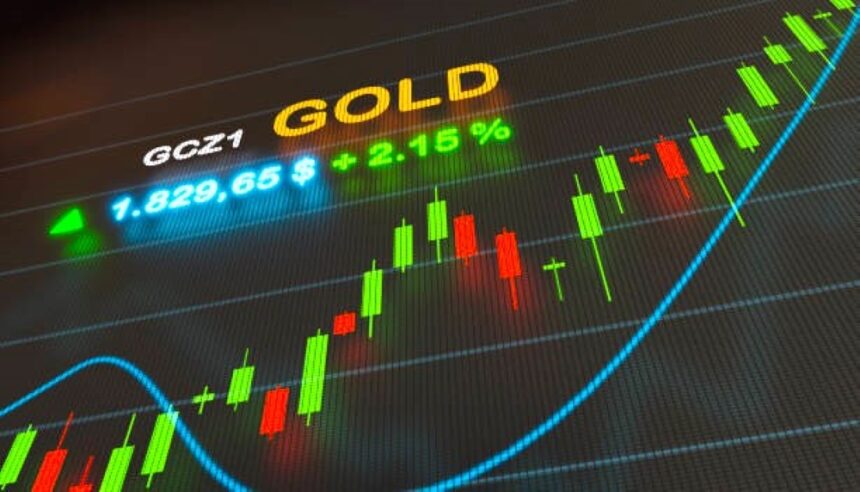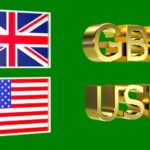Gold Price Struggles to Capitalize on Modest Gains Near $3,250.
Gold prices showed some positive traction early Monday, recovering from last week’s dip near $3,120 and moving toward the $3,250 area. This modest intraday gain was primarily driven by a resurgence in safe-haven demand amid a mixture of economic and geopolitical uncertainties. However, despite the positive momentum, the metal has struggled to build strong bullish conviction. The interplay of factors such as the US credit rating downgrade, tariff threats, Federal Reserve rate cut expectations, and trade optimism has created a delicate balance, keeping gold range-bound for now.
US Credit Downgrade Sparks Safe-Haven Interest
The key driver behind gold’s renewed interest is Moody’s downgrade of the US sovereign credit rating from “Aaa” to “Aa1.” Although still a high-quality rating, this downgrade signals growing concerns about America’s increasing debt burden and fiscal sustainability. The downgrade reflects fears that the US government’s spending, coupled with recent tax cut legislation, will add trillions to the national debt, potentially jeopardizing its creditworthiness over time.
Such a credit rating cut tends to rattle investor confidence in riskier assets like equities and corporate bonds, pushing capital toward safe havens like gold. Investors view gold as a reliable store of value during times when confidence in government finances wavers. This downgrade has reignited cautious sentiment across markets, prompting many to seek protection from potential economic instability by accumulating gold.
Tariff Threats Add to Geopolitical Uncertainty
Contributing to gold’s appeal is the renewed tension surrounding US trade policy. US Treasury Secretary Scott Bessent reaffirmed President Donald Trump’s commitment to impose tariffs on countries that fail to negotiate trade deals “in good faith.” This statement keeps the threat of escalating trade conflicts alive, raising fears of prolonged disruption to global trade and economic growth.
Historically, heightened trade tensions have supported gold prices because they increase global uncertainty. Investors tend to favor safe-haven assets like gold when the outlook for international trade is unstable. The persistence of tariff rhetoric from the US administration has kept geopolitical risks elevated, helping to maintain demand for bullion as a hedge against worsening trade relations.
Fed Rate Cut Expectations Weigh on the US Dollar
Another critical factor supporting gold prices is the market expectation that the Federal Reserve will cut interest rates multiple times this year. Recent US inflation data, including the Consumer Price Index (CPI) and Producer Price Index (PPI), showed signs of easing inflationary pressures. Additionally, weaker-than-expected retail sales figures and declining consumer sentiment have increased bets on an accommodative Fed stance.
Interest rate cuts typically weaken the US Dollar because lower rates reduce yields on dollar-denominated assets. Since gold is priced in US Dollars and does not pay interest, a weaker dollar makes gold cheaper for holders of other currencies and thus more attractive. The US Dollar’s recent struggles, largely driven by dovish Fed expectations, have provided a crucial tailwind for gold’s price recovery.
Trade Optimism Caps Gold’s Upside Potential
Despite the supportive factors, gold has faced resistance near the $3,250 mark. This resistance is largely due to optimistic developments on the trade front. The recent announcement of a 90-day US-China trade truce has eased fears of an escalating trade war, offering a temporary reprieve from tariff hikes and trade-related uncertainties. Furthermore, hopes for additional US trade agreements with other countries have improved risk sentiment.
This improved trade outlook reduces the urgency for investors to seek safe-haven protection, limiting gold’s ability to break out decisively to the upside. As a result, gold remains in a cautious consolidation phase, balancing between risk-on optimism and risk-off concerns.
Geopolitical Risks Maintain Support for Gold
While trade optimism weighs on gold, geopolitical tensions continue to support the metal’s safe-haven appeal. In the Middle East, limited humanitarian concessions have been made in Gaza, but progress on peace talks between Israel and Hamas remains stalled. This ongoing conflict keeps geopolitical uncertainty elevated.
Additionally, in Eastern Europe, Ukraine reported a record number of drone attacks by Russian forces, underscoring the persistent instability in the region. These geopolitical flashpoints sustain a baseline level of risk aversion in global markets, encouraging investors to hold gold as a protective asset during turbulent times.
US Economic Data and Consumer Sentiment Influence Market Sentiment
The overall economic backdrop in the US has also influenced gold’s price dynamics. The University of Michigan’s Consumer Sentiment Index recently dropped to its lowest point since June 2022, indicating that American consumers are becoming more cautious about the economic outlook. Weak consumer confidence often signals slower spending and weaker growth ahead, increasing the likelihood of further Fed easing.
These economic headwinds add to the argument for rate cuts, which supports gold by weakening the dollar and reducing bond yields. However, in the absence of strong economic deterioration, gold investors remain vigilant, watching for clear signs of economic slowdown to justify aggressive positioning.
Looking Ahead: Key Market Drivers for Gold
In the near term, gold prices will likely remain sensitive to comments from Federal Reserve officials. Speeches by influential members of the FOMC could provide critical clues about the pace and scale of future rate cuts. Hawkish signals could strengthen the US Dollar and pressure gold lower, while dovish rhetoric could send gold prices higher.
Additionally, developments in trade negotiations, especially between the US and China, will be closely monitored. Renewed optimism could dampen gold demand, whereas renewed trade tensions or tariff escalations could bolster the metal.
Finally, geopolitical developments, particularly in the Middle East and Eastern Europe, remain unpredictable and can rapidly change market sentiment, providing intermittent support for gold as a safe haven.
Conclusion: Gold Delicate Balance Between Risk and Reward
Gold is currently caught in a tug-of-war between factors supporting safe-haven demand and those fostering renewed risk appetite. The US credit rating downgrade, tariff threats, Fed rate cut expectations, and geopolitical tensions provide a strong underpinning for gold prices. However, improving trade relations and hopes for economic stability have limited the metal’s ability to build on recent gains.
As a result, gold remains range-bound near the $3,250 level, awaiting fresh catalysts to break free from its current consolidation. Investors will be watching upcoming US economic data, Federal Reserve commentary, trade developments, and geopolitical events for clues to gold’s next directional move.
In this environment, gold continues to play its traditional role as a hedge against uncertainty while reflecting the complex and evolving interplay of global economic and political risks.









